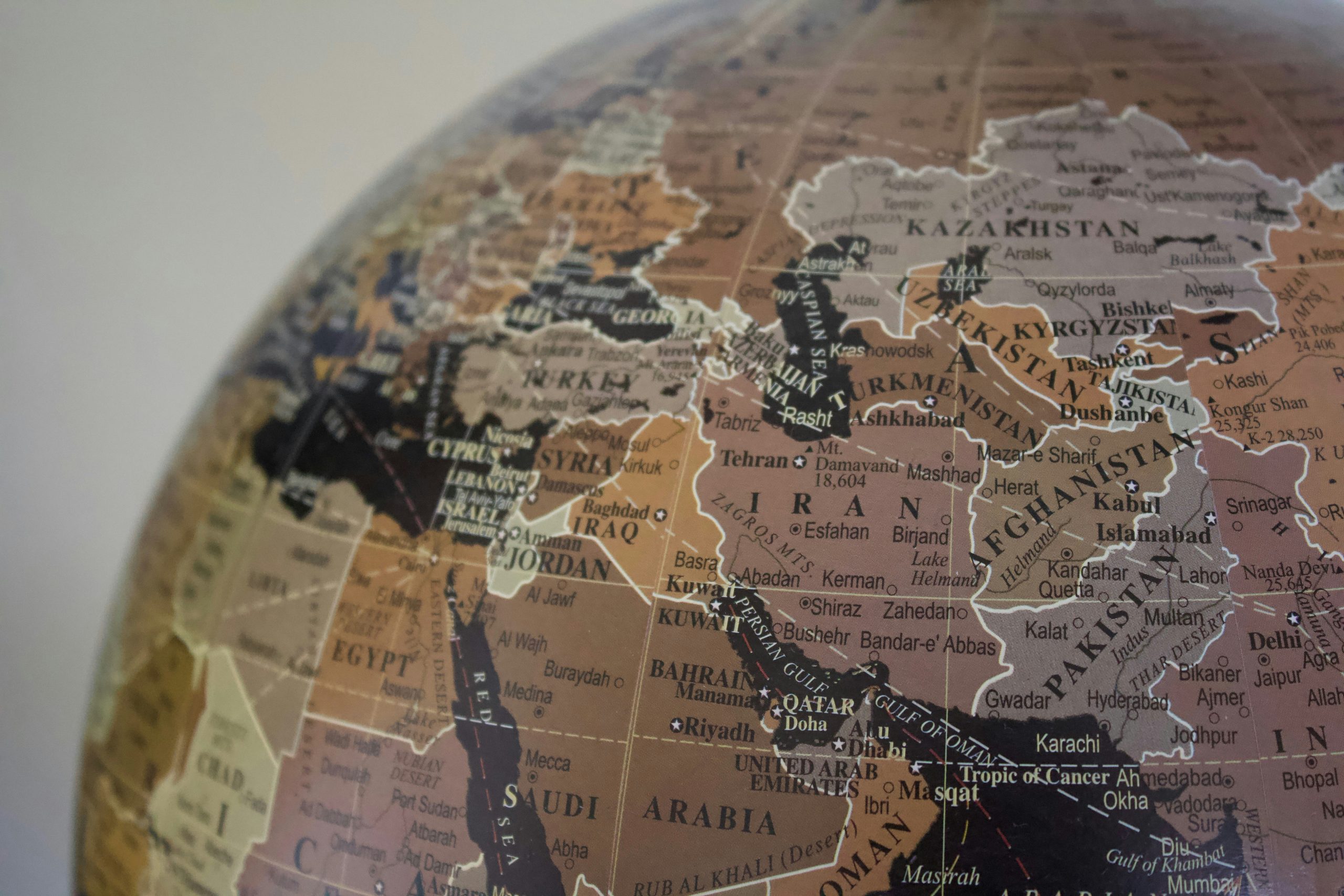What CEOs Need to Know Now: The New Cost of Global Business
The last 30 years, and the playbook of cheap capital, predictable global rules, and low-friction trade is over. Trade is now power politics more than ever before, geopolitics is being re-priced, and the dollar’s risk-free status is at risk. This article will help make sense of all the noise.
Bloomberg’s weekend cover story captures the mood well. It’s not just tariffs; it’s a fundamental re-ranking of national interest over global integration. Poland’s Prime Minister framing Washington’s new stance said, “It doesn’t make sense for 500 million Europeans to beg 300 million Americans to defend them against 140 million Russians.” And he is correct. Us protection, both militarily and economically is no longer an unpriced global public good. Trump and his administration now have explicit price tags across trade, tech, and defence cooperation.
And for anyone to think that Whitehouse dinner’s where the most important business leaders pay homage to the President, will be short-lived are naive. This is a new era of politics in Amerca that any future US President, Democrat or Repubican, will find hard to unwind. Even the tariffs, that could bring in $50 billion each month are a politically addictive revenue that future presidents will find hard to unwind. Remember, Biden kept and expanded on Trump’s 2016 tarrifs despite attacking them when in opposition. The Washington Post tallies the tariff shock: “the average tariff confronting US importers is 18.4 percent… the highest mark since 1933,” a step-function jump from 2.2 percent at the start of 2025. And the Wall Street Journal offers a useful decoder for how these levies are being targeted: “A basic formula: the size of a country’s goods-trade imbalance with the US, divided by how much America imports from that nation.” In other words: if your company’s footprint in the US is big and your bilateral deficit is larger, you are in Trump’s crosshairs.
The nearterm read is that the tarrifs so far have only caused minor disruptions to macro-economic data, and inflation is only ticking up slightly, but in the Financial Time’s Economics Show this week, Capital Economics’ Neil Shearing argues “Trump’s policies are a symptom and not the cause of the global trading system unravelling.” The rivalry-driven rewiring was underway; Washington has simply hit the accelerator.
For business leaders, you need to be assessing your time to reroute supply chains and manufacturing, reviewing the taffic value at risk in your business and for your suppliers, and consider the share of your revenue that could be exposed to US trade actions and counter-trade actions from other states. Failure to do this is like betting your company’s profit and loss on last year’s news headlines.

Geopolitical Alignment Beats Alliances
If you think we are stepping back into neatly defined Cold War blocs, you have failed to read history. Whilt the west saw the early 1990s as the end of the Cold War, other powers saw this as an interregnum, merely a permissive window to stockpile reserves, study the West, influence behind the scenes, and harden energy, supply, and payments systems before testing the rules on their terms. Think: Russia’s unopposed invasion of Ukraine’s Crimea in 2014, or China’s attack on Texas’ energy infrastructure two year’s ago. What we see now with three decades of hindsight is time enough for non-western powers to diversify from the US, build parallel institutions (BRICS, SCO, AIIB), and design shock-tolerant networks that blunt Western leverage.
And today, the military flyovers are loud and the economic and political messages are even louder. Beijing didn’t just host a parade this week; it made a bold and very clear statement. When leaders from China, Russia, North Korea, Brazil, and India shared the stage, the message wasn’t nostalgia, it was a live demo of a world where alignment beats alliance. Each player banked a different benefit, but the risks to the West are clear. China positioned itself as the leader for a non-US order: energy from Russia, markets and leverage with India, standards and finance set in Beijing rather than Brussels or Washington.
Russia also purchased political oxygen and sanction-resilience optics by first standing with Trump in Amerca a few weeks ago, and now surrounded by other world leaders in China today. India signalled strategic autonomy and its willingness to hedge between tariff-wielding Washington and a commodity-rich Eurasia, whilst extracting concessions from all sides. India has always played both sides as leader of the non-aligned opportunistic movement during the Cold War, and this continues today.
The show of unity endorsed a programme of economic hardening and making trade, tech, and finance shock-tolerant to US tariffs and Western-lead controls. Energy flows are being re-routed (discounted Russian barrels, longer-haul cargo, shadow fleets), critical minerals are being onshored or friend-shored within the alignment, and standards are fragmenting (EV chemistries, 5G stacks, AI safety regimes).
For CEOs, the operational impact is immediate. Compliance arbitrage is closing; more trade will be invoiced away from dollars; and a wider spread on US term rates if foreign buyers diversify away from US Treasury holdings.
The Guardian’s editorial that despite other publications talking of an axis, “relations… are better understood as an alignment”, transactional, flexible, and durable enough to cause damage. After Washington hit India with steep tariffs, “Modi’s warm meeting with Xi shows the impact of Trump’s ‘tariff tantrum’.” India is now portfolio rebalancing – as are many other states – and hedging against US unpredictability. For Europe and Asian political leaders, this means more self-funded security and less presumption of US underwriting at the precise moment when industrial policy, energy transition, and defence outlays are all competing for capital. Expect higher sovereign borrowing, tighter fiscal choices, and, in some cases, pressure on currencies. Yes, challenging times ahead. Has your company deeply analysed the assumptions you have made for the last three decades, and what that means for your plans?
International Risks and Business Decisions
As business leaders, you need to make decisions now. You need to review your price and margin architecture and understand the assumptions that your purchasing and internal economists used to make their conculsions. There will be hidden assumptions in everyone’s analysis and these need to be identified and considered.
Similarly, de-risking your supply chains is not a slogan, but an essential activity with strong return on investment. Consider teh jurisdictions critical components come from, and transit through; understand ports-of-convenience, and understand teh time-to-reroutes and monitor this. You should also price, and analyse the possible value of option-premiums to effectively buy a faster switch-time later if needed.
If your exposure to the US is more than 15 percent of your revenue, you must have a Plan B revenue stack. Most intelligent companies have already identified plans for Mexico, Canada, the Gulf, and the Indo-Pacific region, with concrete times, risk analysis, and strategic foresight.
Europe is already rebalancing budgets and considering debt structures in order to fund essential security costs and industrial resilience. There is recognition that the implicit US underwriting of European security and market access is being repriced, just as the continent is simultaneously funding energy transition, re-industrialisation, and critical-infrastructure hardening. The impacts on European business will include higher and more volatile cost of capital; and tighter fiscal choices by governments that prioritise defence, grid, and semiconductor packages over social subsidies.

And finally, your investors, board, and employees will expect you to be able to clearly articulate your global footprint and why it looks the way it does. You will need to anchor your decisions in access, supply-chain security, total costs, and emissions impacts. There will be trade-offs and these need to be considered, red-teamed, refined, and then owned. Hope is not control, and be concerned by anyone in your leadership team who includes the sentence, “We hope …” in their briefing.
The International Risks To Be Monitoring
Over the next 12–24 months, there are three credible paths for the operating environment. These elements of each are already visible and not hypothetical. Your job is to plan across all three, assign owners, and put leading indicators on a single page.
1) Managed fragmentation as the “new normal” baseline.
Tariffs will settle into a permanent feature of the business and international risk landscape. Companies absorb costs through repricing, mix shifts, and selective localisation; capex tilts toward the US and “friendly” hubs; rules-of-origin and product-exclusion calendars become monthly management chores. The political incentive created by tariff revenue makes policy sticky even if macro data look benign. Watch for phased tariff ladders, a steady cadence of limited exemptions, and continued subsidy races on semiconductors, batteries, and clean tech. Expect tighter working capital from longer lead times and compliance friction at borders, plus a structurally higher cost of capital as fiscal needs crowd the bond market. In this path, execution and not narrative decides winners.
2) Block formation where alignment beats alliance.
We call it de facto bloc economics without formal treaties. China deepens ties across the Global South; the US prices access and security more explicitly; Europe and key Asian partners self-fund more defence and industrial policy. Payments diversify (more local-currency invoicing, bilateral swap lines), standards fragment (EV chemistries, 5G stacks, AI regimes), and dual-use controls tighten. The risk for multinationals isn’t just countersanctions, it’s exclusion from procurement lists, standards bodies, and capital pools aligned with a given geopolitcal camp. Watch for new commodity-for-currency deals, “friend-shored” critical-minerals consortia, and faster joint enforcement by Western export-control authorities. Our operational read is that compliance arbitrage will become more difficult, grey-market intermediaries will turn into enforcement headlines, and procurement teams that can’t verify beneficial ownership will become liabilities and being busy wont be a good enough excuse.
3) Policy whiplash from legal and political volatility.
Courts, election cycles, and growth scares generate partial rollbacks or carve-outs, yet the strategic distrust that underpins deglobalisation remains. Companies need to be ready to get rule changes mid-contract and FX and tariff swings mid-quarter. The uncertainty can show up as duplicated inventory, hedging costs, and wasted capex. Watch for injunctions and emergency rules around flashpoints, plus rapid shifts in exclusion lists tied to domestic politics rather than economic logic. In whiplash, resilience is about monitoring key risk indicators and having the ability to switch suppliers, corridors, and financing, in weeks, not quarters.
The Operating Playbook of Winners
Winners translate geopolitics into capital allocation, portfolio shape, and credibility. Localise where it improves returns across the full cost curve; everywhere else, design the business for speed. Set three commitments:
- Operating model: put political risk on the same scorecard as growth and ROIC, with decision rights and incentives aligned. That’s the work: concentrate the portfolio, buy options where uncertainty is highest, and communicate a clear narrative investors can underwrite.
- Capital allocation: fund only those markets, corridors, and categories where geopolitics raises your risk-adjusted returns.
- Portfolio shape: decide what you will exit, pause, and double-down on—before events force you.
Play offense on capital, customers, and credibility. Choose where to plant your company’s deepest roots, buy options where you can’t, tell a story the market believes in, and then execute faster than the news cycle. Re-underwrite political risk the way you underwrite credit risk: put geopolitical exposure on the same dashboard as liquidity and leverage, and don’t rely on people who just read the headlines as your internal or external advisors.
This isn’t a blip. It’s a permanent regime change. Bloomberg calls it a structural pivot away from global integration; the FT argues the underlying fracture pre-dated the current White House and will continue long beyond Trump’s second (or third term); the Washington Post says that the historic scale and sticky revenue incentives mean they are likely to stay; and the WSJ decodes the operating logic and near-term impacts as significant and essential for businesses to understand.
A CEO’s job is not to pick sides in history. It’s to keep the company solvent, scaling, and credible as history shifts under your feet. Start acting like the rules just changed, because they did.





One Comment
Comments are closed.